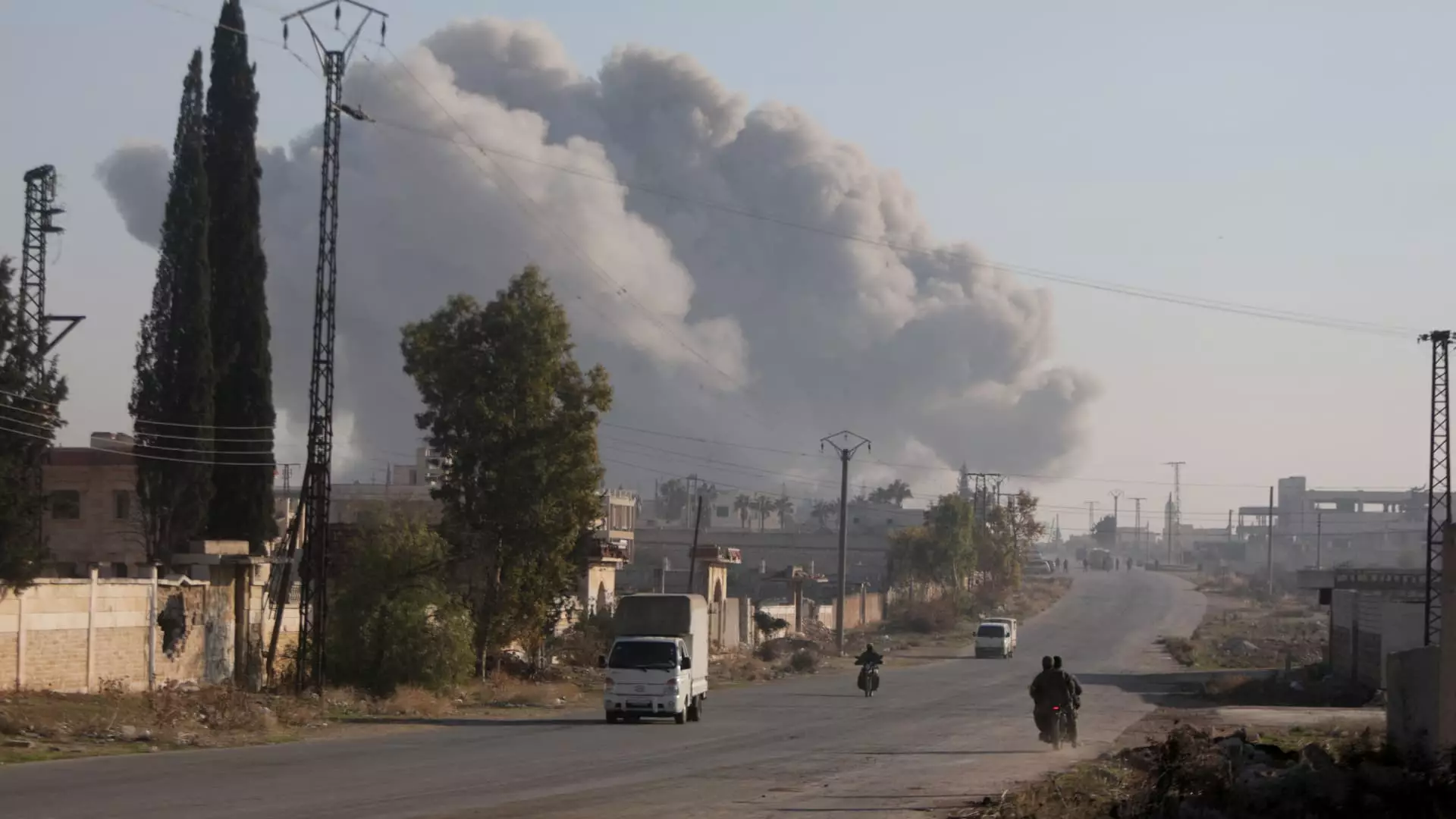On a fateful Friday, Aleppo—once the epicenter of intense fighting during Syria’s civil war—was thrust back into the throes of conflict. The recent insurgent offensive signifies a significant resurgence of resistance against the Syrian government, marking the first direct confrontations since 2016. The palpable tension in the air prompted many residents to seek refuge from the violence that erupted seemingly out of nowhere, raising alarm bells not only for the people of Aleppo but for regional stability overall.
The offensive began earlier in the week when various insurgent factions, particularly the Hayat Tahrir al-Sham (HTS) group, launched a coordinated assault from the northwestern countryside. This unexpected maneuver swiftly escalated into a broader offensive that forced residents on the city’s periphery to evacuate due to continuous gunfire and missile strikes. The Syrian Observatory for Human Rights depicted this resurgence as one of the most intense bouts of fighting witnessed in the region since before 2020. As the momentum swelled, dozens were reported dead from both sides, indicating the offensive’s severity.
Aleppo’s strategic significance cannot be overstated; its fall to opposition forces previously in 2016 marked a pivotal point in the protracted Syrian conflict. That catastrophic battle saw the Syrian government, bolstered by Russian and Iranian support, wrest control from the insurgents who had held parts of the city. Now, the recent clashes inject renewed urgency into an already volatile region, battling a multitude of conflicts exacerbated by tension in neighboring countries, notably Israel’s hostilities in Gaza and Lebanon with Hezbollah.
Interestingly, the resurgence of opposition forces comes amidst a backdrop of distraction for fundamental players in the Syrian conflict. Expert analyses, such as those from Dareen Khalifa of the International Crisis Group, posit that the Iranian-bolstered factions like Hezbollah find themselves embroiled in their battles, thereby diverting their attention from ground operations in Syria. Simultaneously, Russia’s military commitments have become increasingly strained due to the ongoing war in Ukraine. The question remains: have these distractions allowed insurgents to find newfound confidence and aggressiveness in their operations?
Analysts and observers, including former U.S. ambassador Robert Ford, have flagged the apparent weakness of Syrian government forces in the face of this offensive. Reports suggest that government troops exhibited signs of disorganization and even retreat, which could imply a broader deterioration in morale and capability following years of costly conflict. The swift advance by opposition factions raises concerns regarding the efficacy of government-controlled regions and lays bare the fragile facade of stability that the Assad regime has sought to project.
Moreover, Turkey’s involvement in Syria complicates the situation further. Allegations have emerged about Ankara’s failure to uphold a 2019 agreement aimed at creating a de-escalation zone. The latest offensive could easily unravel any diplomatic efforts Turkey had attempted, calling into question the effectiveness of their military presence in a country rife with conflict. A preemptive “limited” strike against government forces has escalated into a full-blown offensive, demonstrating the complexities and unpredictable nature of warfare in the region.
Continued Humanitarian Crisis
The renewed clashes in Aleppo serve as a somber reminder of the ongoing humanitarian crisis in Syria. Civilians once again find themselves caught in the crossfire, with reports of missile strikes affecting residential areas, including student accommodations within the city’s universities. As the battle rages, the fractured state of governance leaves countless lives hanging in precarious balance, driving more families to seek refuge from their homes.
The implications extend far beyond Aleppo. The attack threatens to set a precedent for further unrest across Syria, undermining hopes for peace and stability that have been tenuous at best since the civil war erupted more than a decade ago. In a grim echo of the past, Aleppo serves as a stark reminder of the fragility of peace in a landscape marred by relentless conflict.
The recent insurgent offensive in Aleppo is more than just a local disturbance; it represents the materialization of unresolved conflicts, geopolitical distractions, and the continuing humanitarian crisis within Syria. As the situation unfolds, the risks loom larger, with potential repercussions not confined to Aleppo alone. For residents and the broader international community, the continuing violence raises urgent questions; how long can Syria remain embroiled in strife? The answer remains dangerously uncertain.

Leave a Reply